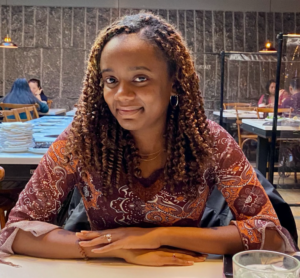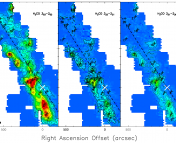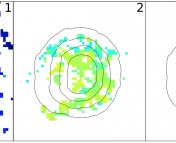The Undergraduate Research series is where we feature the research that you’re doing. If you are an undergraduate that took part in an REU or similar astro research project and would like to share this on Astrobites, please check out our submission page for more details. We would also love to hear about your more general research experience!

Jada Louison
Barnard College
Jada Louison is a current undergraduate senior studying Astrophysics at Barnard College of Columbia University. She completed this research under the supervision of Dr. Regina Jorgenson at the Maria Mitchell Association REU program in Nantucket during the summer of 2021.
Fast radio bursts (FRBs) are extremely bright, millisecond duration radio bursts, whose progenitors are currently unknown and hotly debated. The Fast & Fortunate for FRB Follow-up collaboration (F4), performs follow-up observations of the host galaxies of well-localized FRBs to constrain FRB progenitor models, as well as to probe the intergalactic medium (IGM). Now known as the Macquart relation, the host galaxy’s redshift and dispersion measure (DM) contribution can be used to determine the DM contribution due to the IGM (DM_cosmic). This technique recently enabled the first definitive detection of the formerly “missing” baryonic matter residing in the IGM.
In this project, we used optical Very Large Telescope Multi Unit Spectroscopic Explorer (VLT/MUSE) observations of the host galaxy of FRB 20190714, detected by the Australian Square Kilometer Array Pathfinder (ASKAP) radio telescope to <1 arcsec accuracy. With MUSE Integral Field Unit (IFU) spectroscopy, we performed detailed analysis of the host galaxy on a spatial pixel by spatial pixel basis by detecting and measuring various emission lines including H-alpha, H-beta, [NII], and [OIII], and derived kinematic maps of the galaxy. Furthermore, we used these emission lines to produce maps of the galaxy’s star formation rate and metallicity and utilized these maps to investigate how the site of the well-localized FRB compares with the overall host galaxy properties.
Our initial analysis determined that the location of FRB20190714 does not appear to deviate greatly from its global host galaxy properties, therefore we are continuing to analyze the various emission lines, kinematics, and morphology of the host galaxy. Additionally, I plan to publish these findings in a possible collaborative paper and present it at a future American Astronomical Society (AAS) meeting.

Astrobite edited by: Haley Wahl




